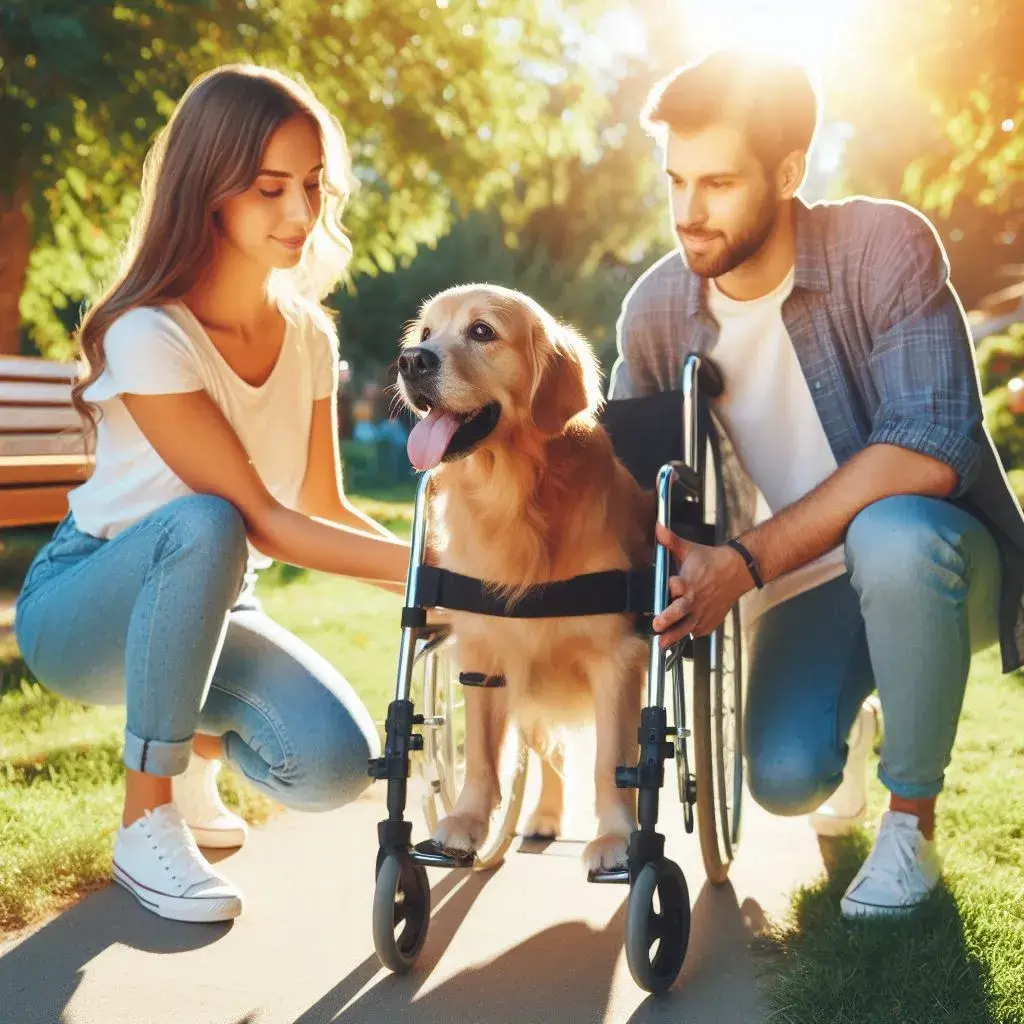Caring for a dog with special needs can be a challenging but rewarding experience. Just like humans, dogs can face various disabilities, whether congenital or developed later in life, and it’s important to understand how to support them physically, emotionally, and behaviorally. This guide will provide you with the essential information on how to handle a dog with special needs, ensuring they have a happy, fulfilling life.
1. Understanding Special Needs in Dogs
Dogs, like humans, can have special needs due to various reasons, such as genetic conditions, accidents, aging, or illness. Special needs may include mobility issues, sensory impairments (such as blindness or deafness), chronic diseases, or even emotional and behavioral challenges. Understanding the specific needs of your dog is the first step to providing them with a comfortable and happy life.
Dogs with special needs often require extra attention and care, but with the right support system in place, they can thrive just as much as any other dog. Knowing what to expect will help you better handle these needs.
2. Common Types of Disabilities in Dogs
Dogs with special needs may face a variety of challenges, which generally fall into three main categories:
Physical Disabilities
Physical disabilities in dogs can range from paralysis and joint disorders to amputations or severe arthritis. These conditions often require mobility aids and adjustments in daily care to help the dog move comfortably.
Neurological Conditions
Conditions like epilepsy, cerebral palsy, or degenerative myelopathy affect the nervous system and can result in seizures, balance issues, and coordination problems. Neurological conditions often require long-term management and consistent vet care.
Sensory Impairments
Dogs with visual impairments (blindness) or hearing loss (deafness) face unique challenges in navigation and communication. These impairments may develop gradually due to aging or occur suddenly because of an accident or illness.
3. Creating a Safe Environment for Special Needs Dogs
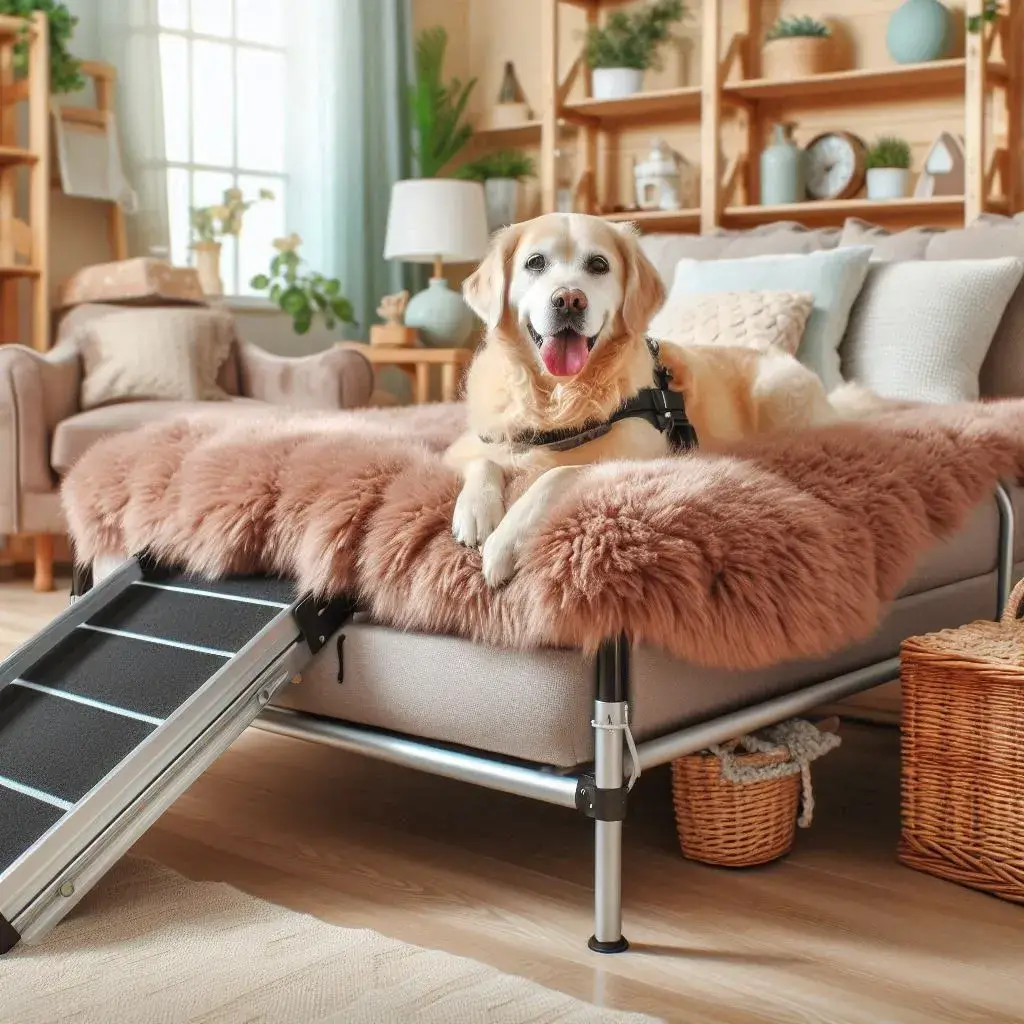
Ensuring your home is safe for your special needs dog is essential. Each disability may require specific modifications to your living space, such as:
Indoor Safety Tips
- Place rugs or non-slip mats on hard floors to prevent slipping.
- Install ramps to help dogs with mobility issues access furniture or navigate stairs.
- Remove obstacles that might block pathways for blind dogs.
Outdoor Safety Adjustments
- Use enclosed spaces for blind or deaf dogs to prevent them from wandering off.
- Consider installing ramps outside to avoid steps.
- Make sure any outdoor areas are free of hazards like sharp objects or uneven ground.
4. Nutrition and Health for Dogs with Special Needs
Diet plays a critical role in the health and well-being of a dog with special needs. Tailored nutrition can help manage specific conditions, such as joint issues or weight management for dogs with limited mobility.
Tailored Diets
- Dogs with arthritis: Consider omega-3 fatty acids and glucosamine supplements to support joint health.
- Overweight dogs: A lower-calorie diet can help reduce strain on joints.
Medication and Supplements
Many special needs dogs require medication to manage pain, prevent seizures, or control inflammation. Always consult with a vet to ensure your dog gets the right balance of nutrients and medications.
5. Emotional and Behavioral Care for Disabled Dogs
Dogs with disabilities can often become anxious or stressed due to their condition. It’s crucial to provide emotional support along with physical care.
Managing Anxiety and Stress
- Establish a routine that your dog can rely on.
- Use calming aids, such as pheromone diffusers, to help manage anxiety.
Training Techniques for Dogs with Special Needs
Training should focus on positive reinforcement and be adapted to the dog’s specific limitations. For example, a deaf dog will benefit from hand signals, while a blind dog may need tactile cues.
6. Mobility Aids and Adaptive Equipment for Special Needs Dogs
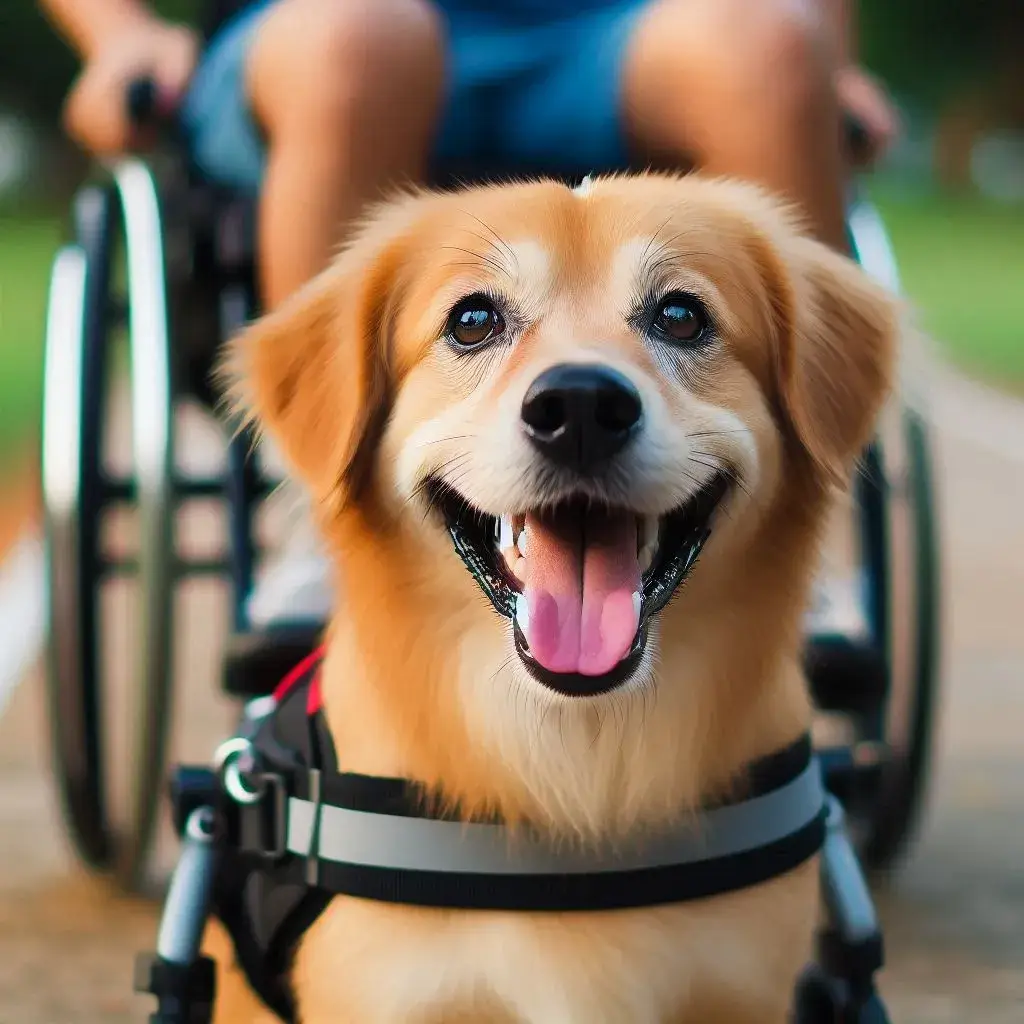
There are many types of adaptive equipment designed to improve the quality of life for dogs with mobility challenges:
Types of Mobility Aids
- Wheelchairs: Dogs with hind-leg paralysis or weakness can benefit from using a wheelchair to regain some independence.
- Harnesses and Slings: These can help you lift or support your dog during walks or when getting up.
Choosing the Right Equipment
It’s essential to consult with a veterinarian or a pet mobility expert when choosing mobility aids to ensure they fit properly and provide the right level of support.
7. Vet Care and Regular Checkups
Routine veterinary care is especially important for dogs with special needs. Regular checkups help catch potential health issues early and ensure your dog’s condition is being managed effectively.
Importance of Specialized Veterinary Care
Some dogs may require a veterinarian who specializes in their particular condition. For example, a neurologist may be needed for dogs with epilepsy, while an orthopedic vet might be best for dogs with joint issues.
Signs to Watch For
Always be vigilant for changes in behavior or mobility, as these could indicate that your dog’s condition is worsening or that they need a medication adjustment.
8. Socialization and Playtime for Dogs with Special Needs
Just because a dog has special needs doesn’t mean they can’t enjoy playtime or socialization with other pets. It’s all about finding the right activities for their abilities.
Games and Activities Adapted for Disabilities
- For blind dogs: Play scent-based games where they can use their sense of smell.
- For deaf dogs: Use visual cues or hand signals during play.
Socialization with Other Pets
Always supervise interactions between a special needs dog and other animals. Some disabilities can affect how a dog reacts in social settings, so introduce new pets slowly and carefully.
9. Grooming and Hygiene for Disabled Dogs
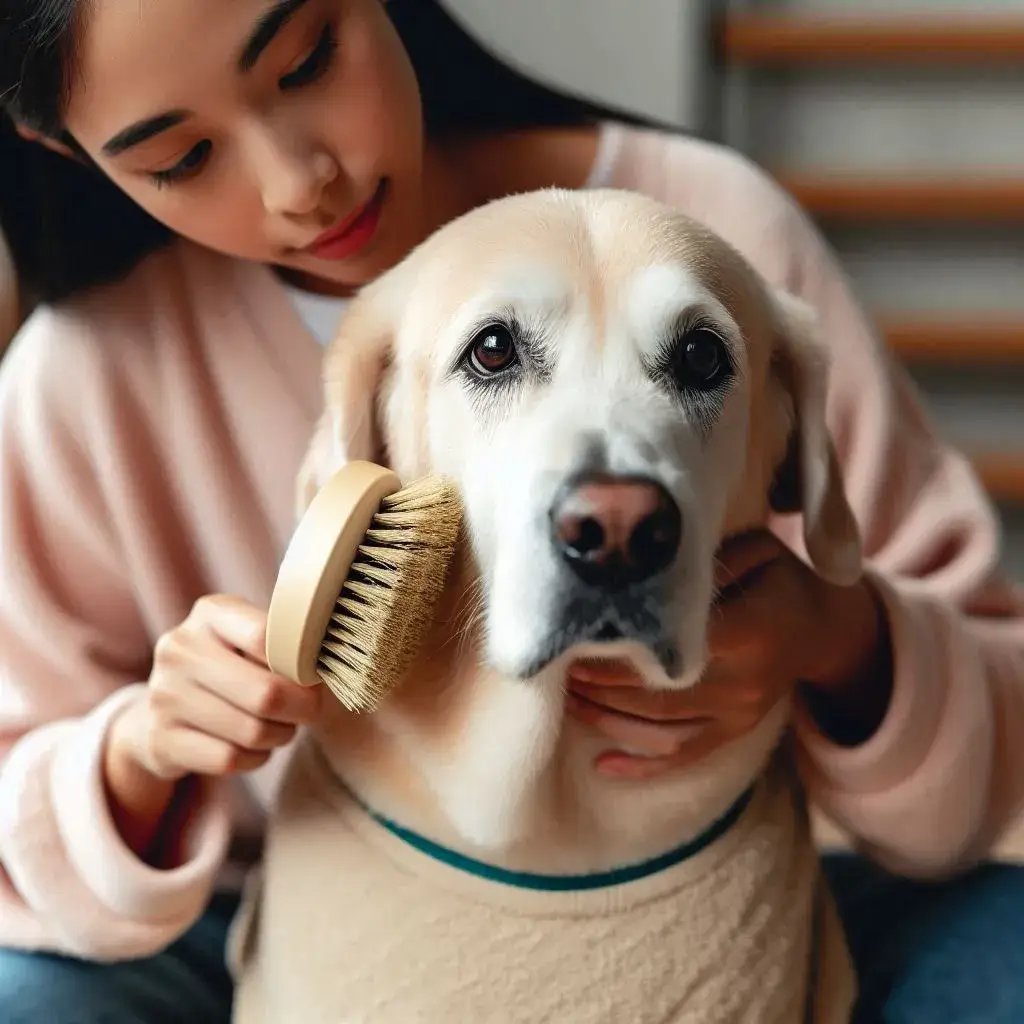
Keeping your dog clean and groomed is essential, but it can be more challenging if your dog has mobility or neurological issues.
Grooming Tools for Disabled Dogs
Invest in grooming tools that are easy to use and comfortable for your dog, such as soft brushes or nail grinders designed for sensitive paws.
Hygiene Challenges and Solutions
Some dogs may need help with bathroom habits if they have mobility issues. Puppy pads, diapers, or bathing may be necessary to maintain hygiene.
10. Traveling with a Dog with Special Needs
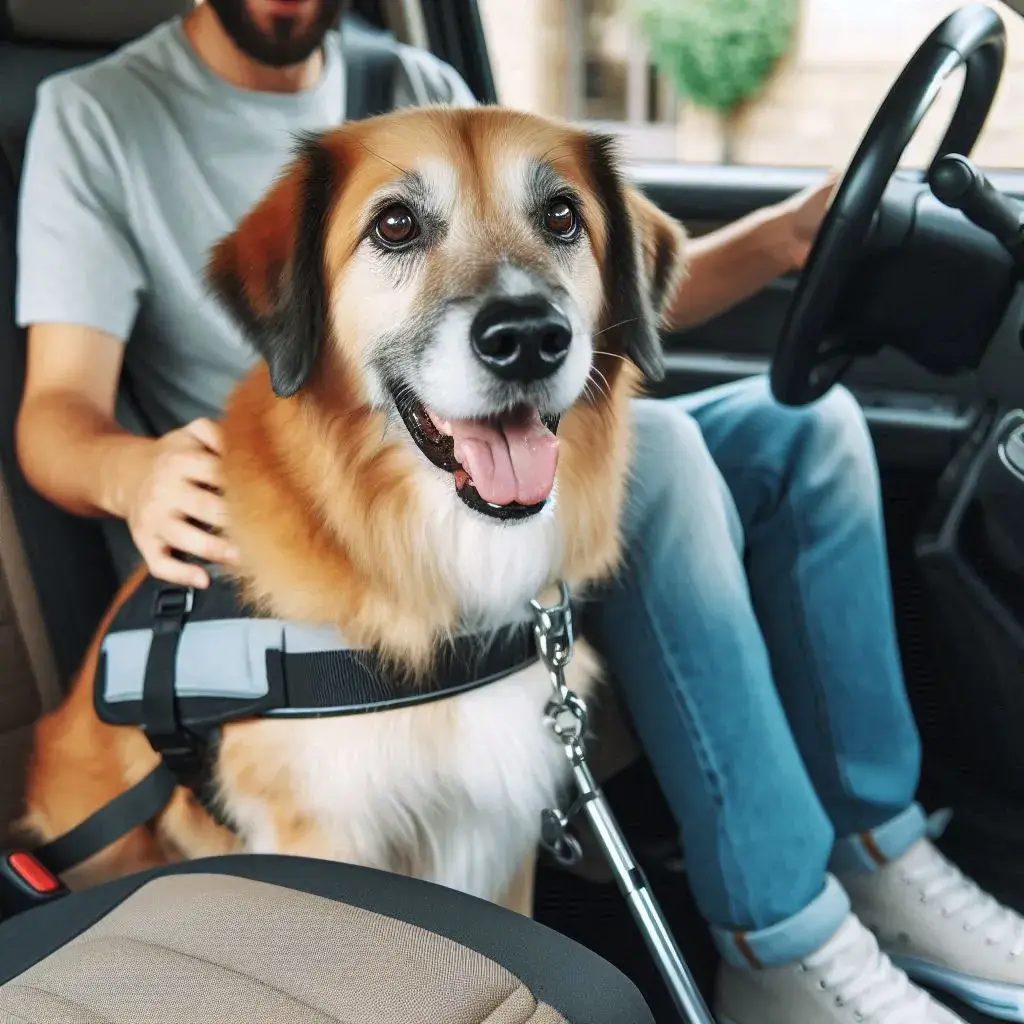
Traveling with a special needs dog requires additional preparation, but with the right steps, it can be an enjoyable experience for both of you.
Preparing for Travel
- Pack all necessary medications, mobility aids, and comfort items like blankets or toys.
- Contact your vet ahead of time for travel advice and recommendations.
Tips for Safe Car and Air Travel
- Make sure your dog is secured in a crash-tested harness or crate during car trips.
- If flying, research airlines that accommodate pets with special needs.
FAQs about Caring for Dogs with Special Needs
1. What is considered a special needs dog?
A special needs dog has a physical, neurological, or emotional condition requiring extra care or specific accommodations.
2. Can special needs dogs live normal lives?
Yes, with the right care and support, many dogs with special needs can live happy and fulfilling lives.
3. How do I train a deaf or blind dog?
Training should focus on using cues that cater to their remaining senses, such as hand signals for deaf dogs or verbal commands for blind dogs.
4. What equipment do I need for a dog with mobility issues?
Common mobility aids include wheelchairs, harnesses, and ramps. Consult your vet to determine the best equipment for your dog’s needs.
5. How often should I take my special needs dog to the vet?
Dogs with special needs should see a vet regularly, at least every 6 months, or more often if their condition requires closer monitoring.
Conclusion: Love and Patience Go a Long Way
Caring for a dog with special needs can be challenging but is deeply rewarding. With proper care, patience, and understanding, you can ensure that your dog lives a long, happy, and comfortable life. The key is to remain attentive to their needs and be proactive in managing their health, behavior, and emotional well-being.
